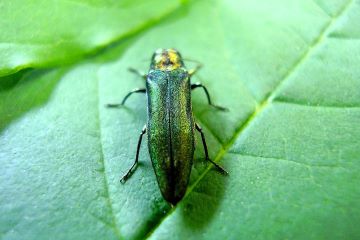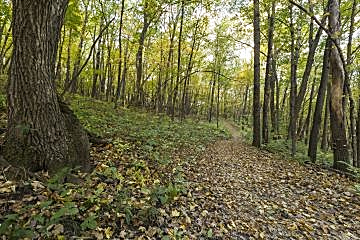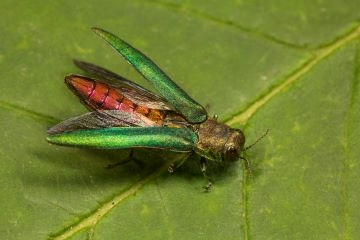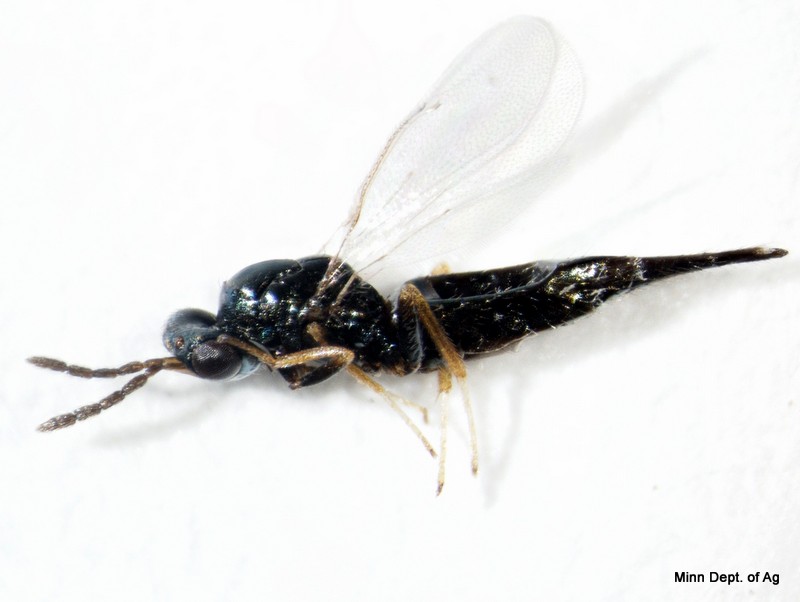
Tetrastichus planipennisi Yang (Hymenoptera: Eulophidae) are small parasitoids (1.6 to 4.1 mm long). Adult females locate EAB larvae under ash bark and insert eggs into EAB larva. Parasitized EAB larva remain active for approximately one week although the parasitoids develop within and eventually consume the EAB larvae. Tetrastichus planipennisi larvae pupate inside the EAB gallery and emerge approximately 15 days after pupation by chewing an exit hole through the bark. They overwinter as larvae within the host or host gallery. Approximately 4-172 progeny are produced per EAB larva. In China, T. planipennisi completes four or more generations per year and parasitism levels range from 0-65%.

Tetrastichus planipennisi Yang (Hymenoptera: Eulophidae) are small parasitoids (1.6 to 4.1 mm long). Adult females locate EAB larvae under ash bark and insert eggs into EAB larva. Parasitized EAB larva remain active for approximately one week although the parasitoids develop within and eventually consume the EAB larvae. Tetrastichus planipennisi larvae pupate inside the EAB gallery and emerge approximately 15 days after pupation by chewing an exit hole through the bark. They overwinter as larvae within the host or host gallery. Approximately 4-172 progeny are produced per EAB larva. In China, T. planipennisi completes four or more generations per year and parasitism levels range from 0-65%.
Spathius galinae (larval parasitoid)
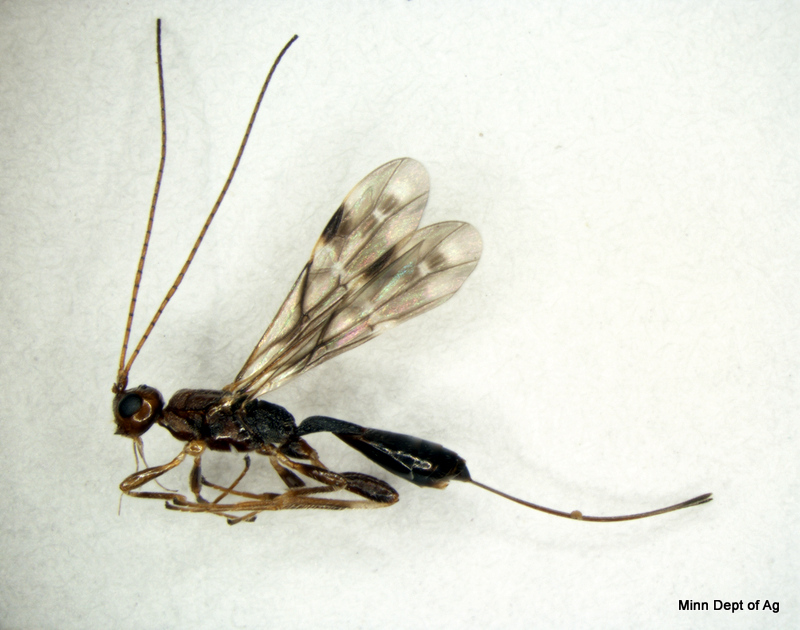
Spathius galinae Belokobylskij and Strazanac (Hymenoptera: Braconidae) are small parasitoids. Adult females locate EAB larvae under ash bark, paralyze and lay eggs on the outside of the EAB larva. Parasitoid larvae develop and consume the EAB larva. S. galinae larvae pupate inside the EAB gallery and emerge approximately one month later by chewing an exit hole through the bark. They overwinter as larvae within the host gallery. Approximately 5-12 individuals are produced per EAB larva. In the Russian Far East, S. galinae completes two generations per year with parasitism rates averaging 63%.

Spathius galinae Belokobylskij and Strazanac (Hymenoptera: Braconidae) are small parasitoids. Adult females locate EAB larvae under ash bark, paralyze and lay eggs on the outside of the EAB larva. Parasitoid larvae develop and consume the EAB larva. S. galinae larvae pupate inside the EAB gallery and emerge approximately one month later by chewing an exit hole through the bark. They overwinter as larvae within the host gallery. Approximately 5-12 individuals are produced per EAB larva. In the Russian Far East, S. galinae completes two generations per year with parasitism rates averaging 63%.

Spathius galinae Belokobylskij and Strazanac (Hymenoptera: Braconidae) are small parasitoids. Adult females locate EAB larvae under ash bark, paralyze and lay eggs on the outside of the EAB larva. Parasitoid larvae develop and consume the EAB larva. S. galinae larvae pupate inside the EAB gallery and emerge approximately one month later by chewing an exit hole through the bark. They overwinter as larvae within the host gallery. Approximately 5-12 individuals are produced per EAB larva. In the Russian Far East, S. galinae completes two generations per year with parasitism rates averaging 63%.
In 2025, the Minnesota Department of Agriculture (MDA) proposed 12 areas in Minnesota to be aerially managed for spongy moth with Btk (Bacillus thuringiensis var. kurstaki). Spongy moth is a destructive invasive pest that threatens forest health. Btk is a bacterial insecticide that kills spongy moth caterpillars and is used on high-risk, dense populations.
There is only a short window of time in the spring where Btk is effective, due to the insect’s life cycle. The MDA has not received necessary federal funds for spongy moth Btk aerial management in time and has been forced to cancel these proposed operations.
The areas with canceled Btk management are in Anoka, Carlton, Itasca, St. Louis, and Winona counties, totaling 2,752 acres. This includes canceling the proposed work in the cities of Coon Rapids, Grand Rapids, and Winona.
For decades, MDA in partnership with the United States Department of Agriculture (USDA) Forest Service’s Slow the Spread program has used aerial management to reduce the spread of spongy moth by more than 60%. In Minnesota over 1.1 million acres have been successfully aerially managed.
“Having to cancel Btk aerial management operations in these areas jeopardizes the future success of this program. Spongy moth populations in these areas will likely increase and advance quicker into neighboring areas, making future years of management more complicated and costly,” said MDA Commissioner Thom Petersen.
To prevent any human-assisted spread from these unmanaged areas, the MDA may consider implementing temporary quarantines, restricting the movement of any spongy moth life stages or woody tree material from leaving the area.
The MDA is still planning to move forward with other ways to manage spongy moth populations. We propose to manage 112,000 acres with an aerially applied mating disruption pheromone that stops the moths from reproducing. The MDA will also be conducting our yearly survey that tracks spongy moth populations in the state. Both strategies also rely on federal funding.
Overall, federal funding for these strategies is still uncertain; however, the MDA has been assured to receive initial funding for the spongy moth survey. It is still unknown if federal funds to perform aerial mating disruption operations will be distributed in 2025.
A threat to Minnesota’s forest is a threat to many Minnesotans’ livelihoods and our state’s economy. The MDA will continue to work within its state program to monitor spongy moth populations and to advocate for the best possible management strategies in the future.
###
Media Contact
Brittany Raveill, MDA Communications
651-201-6131
Brittany.Raveill@state.mn.us
